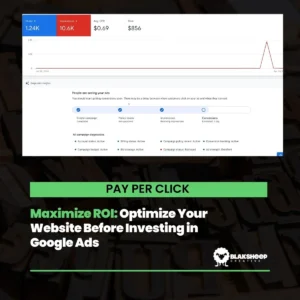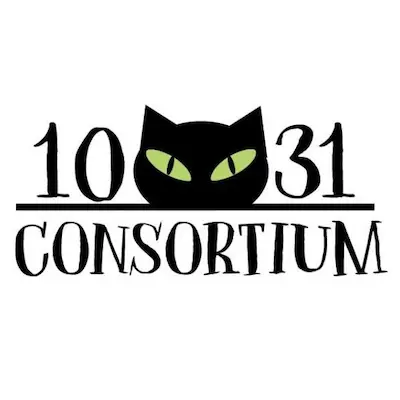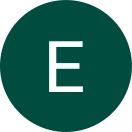In the bustling, ever-evolving marketing world, it’s like navigating through a jungle – exciting but filled with challenges at every turn. One of the trickiest paths to tread? Figuring out which clients are the golden tickets and which are, well, not so much. It’s a bit like sorting through a mixed bag of jelly beans, trying to avoid the flavors that just don’t sit right.
The saying “not every client is worth your time” isn’t just some catchy phrase to slap on a coffee mug. It’s a crucial strategy, a kind of secret compass for steering your business ship through choppy waters. Getting this right can be a game-changer for your success and sanity.
In this little guide, we’re going to dive into the nitty-gritty of sorting the wheat from the chaff when it comes to clients. Why do some clients fit like a glove while others feel like square pegs in round holes? How do you spot these misfits early on, and – here’s the clincher – how do you let them down gently, with all the grace of a swan on a lake? It’s all about focusing your energy on those relationships that are not just profitable but also bring a smile to your face and a spring to your step.
So, grab your explorer hat, and let’s embark on this journey to discover how to make your client list not just a list but a lineup of stars that align with your business goals and values.
Understanding the Value of Selective Client Engagement
In the marketing world, think of your time and resources as your personal stash of gold coins. You wouldn’t just hand them out to anyone, right? That’s why engaging with clients who really jive with your business values and goals is like striking gold. But this isn’t just about choosing clients; it’s about ensuring that the leads you’re considering are coming from reliable and diversified sources.
Our experience has shown that not all referral sources are created equal, and putting too much faith in a single source, like Facebook groups, can lead to a mismatch in expectations and values. For more on why a strategic, diversified approach to lead generation is crucial, dive into our insights in Why We Don’t Put Too Much Faith in Referrals in Facebook Groups.
By being selective and focusing on quality client relationships, you’re not just filling your roster with names; you’re curating a list of stars that align with your business cosmos. It’s about cultivating relationships that are not just profitable but also harmonious with your business’s rhythm.
Now, this isn’t about setting up a velvet rope and being ultra-selective in a snobbish way. It’s more about knowing your worth and understanding that the best relationships in business are those where both sides get to high-five at the end of the day. It’s about figuring out which clients will hop on your business train and enjoy the ride alongside you.
When you get selective with client engagement, it’s like choosing teammates for a relay race. You want people who can run alongside you, keeping pace and passing the baton smoothly. These are the clients who get what you’re about, appreciate the magic you bring to the table, and add their own kind of sparkle to your professional journey.
So, the key takeaway? Don’t spread your gold coins too thin. Invest them in the clients who’ll help you grow, learn, and maybe even have a laugh or two along the way. It’s not just about filling your client roster; it’s about filling it with stars that light up your business sky.
| Criteria | Description |
| Business Values Alignment | Client’s values and business ethics align with your own. |
| Budget Compatibility | Client’s budget aligns with your pricing structure. |
| Growth Potential | Potential for client’s business to grow and evolve with your services. |
| Respect for Expertise | Client respects your professional expertise and advice. |
For a deeper dive into how SMBs can navigate the complex digital marketing landscape, enhancing selective client engagement, read our comprehensive guide, ‘Understanding the Digital Marketing Landscape for Small and Medium-Sized Businesses (SMBs)‘.
Crafting the Ideal Client Profile
Picture yourself as a tailor in the bustling world of marketing. Just like a tailor needs to know the exact measurements to create the perfect suit, you need to know what makes up your ideal client. This is about understanding not just who could use your services but who will wear them like a well-tailored outfit.
So, how do you sketch out this ideal client profile? It’s a bit like putting together a puzzle. You need to consider several pieces:
- Industry: What playground does your client play in? Tech, retail, non-profit – each has its own vibe.
- Business Size: Are you looking at startups, mid-sized companies, or big enterprises? Each brings a different level of complexity (and budget).
- Growth Stage: A budding business might need something entirely different from a well-rooted tree.
- Client’s Values and Expectations: This is the heart of it all. What do they stand for? What are they really hoping to achieve, and does it sync with your way of doing things?
By crafting this ideal client profile, you’re essentially building a compass to navigate the sea of potential clients. It’s a tool to help you spot who’s likely to be a smooth sailing partner and who might be a bit of a rough sea. The goal? To ensure a better fit where you’re not just providing a service but also creating a meaningful and productive partnership.
Think of this profile as your secret recipe. Once you’ve got it, you’ll be able to whip up the perfect client mix that complements your business flavors just right.
Why Some Clients Don’t Fit the Bill
In the grand marketing carnival, not every guest is going to love the ride you offer, and that’s perfectly fine. Recognizing early on that a potential client may not sync with your ideal profile is like dodging a bullet in the business world. Let’s break down why some clients might just be square pegs for your round holes.
Unrealistic Expectations: The Dream vs. Reality
Picture a client who dreams big – which is great – but their dreams are soaring in the stratosphere while their understanding of gravity (a.k.a. the real world) is a bit, well, lacking. They want the moon delivered on a silver platter but by yesterday. When these sky-high expectations crash land into reality, it often leaves everyone feeling a bit bruised.
Budget Constraints: Champagne Taste on a Beer Budget
Then there are those clients who have champagne tastes but a beer budget. They yearn for the Rolls-Royce of marketing campaigns but are only willing to pay for a scooter. This gap between what they desire and what they’re willing to invest can lead to a tug-of-war, straining the relationship and the quality of the work.
Misalignment in Business Values: When Paths Diverge
Sometimes, you and a client are just not on the same page or even in the same book. This misalignment can be about business ethics, work culture, or even long-term goals. Working with clients whose values clash with yours can be like wearing a shoe that’s just a size too small – uncomfortable and likely to cause blisters.
Friends and Discounts: A Tricky Balancing Act
Ah, working for friends or at a discount – the classic conundrum. It sounds like a good idea until you find your professional boundaries blurred and your work undervalued. It’s like giving away free tickets to your show, only to find the audience expects a Broadway-level production.
Chasing Payments: The Not-So-Fun Run
Chasing after payments can feel like being stuck in a never-ending game of tag – it’s exhausting and, frankly, not why you got into the business. Late or reluctant payments can disrupt your flow and affect your financial stability, not to mention feel a bit disrespectful.
The Brand Impact: More Than Just Business
When clients don’t mesh well with your vibe, it can ripple out beyond just the immediate work. Negative experiences can lead to less-than-stellar reviews or word-of-mouth, casting a shadow over your brand’s sparkling reputation.
In the early days of your career, it might be tempting to say yes to everyone who knocks on your door. But remember, being selective and choosing clients who align with your business ethos, expectations, and financial needs isn’t just smart – it’s essential for crafting a marketing journey that’s fulfilling and sustainable. It’s about finding those clients who don’t just fit the bill but also jazz up your business tune.
Assessing Long-Term Value vs. Short-Term Gain
Figuring out whether to chase after the quick buck or play the long game with clients is like choosing between grabbing a fast-food burger or cooking a gourmet meal. Both have their perks, but each impacts your business’s journey in very different ways.
The Quick Cash Temptation
Let’s talk short-term gains. They’re like those flash-in-the-pan moments – tempting, especially when your wallet’s feeling light. You know, those clients who come in, wave a quick project with immediate payout but aren’t really in for the long haul. Sure, it’s a quick fix for your cash flow, but it’s like snacking on junk food – it fills you up for now but doesn’t really nourish your business’s health in the long run.
The Long-Term Relationship Magic
Now, on the flip side, there are clients who are more like a fine wine – they get better over time. These are the ones who stick around, offering projects that grow and evolve, just like a solid partnership should. They’re not just clients; they become collaborators, maybe even friends. This kind of relationship doesn’t just keep the lights on; it builds a strong foundation for your business’s future.
Growth and Alignment: The Perfect Match
When you’re eyeing potential clients, think about whether they’re in sync with where you see your business heading. Do they get excited about growing together? Are they up for trying out your out-of-the-box ideas? When a client’s ambitions dance well with yours, it’s like creating a hit tune that everyone wants to hum along to.
Balancing Act: The Best of Both Worlds
Sure, prioritizing long-term value is the dream, but don’t write off the short-term gigs entirely. Sometimes, you need those quick wins to keep things rolling. The trick is to find a sweet spot where you can juggle both without dropping the ball on building those lasting, valuable relationships.
Trusting Your Gut
And hey, never underestimate your gut feeling. Sometimes, it’s not all about the numbers and the logic. If your Spidey senses are tingling, telling you that a client is more flash than substance, or they’re the real deal, listen to it. Your instincts, mixed with a dash of practical thinking, can be your best guide.
In the end, while the allure of quick cash can be strong, weaving a tapestry of long-term, meaningful client relationships is where the real magic happens in the marketing world. It’s about striking a harmony between meeting your immediate needs and crafting a future that’s as bright as your ambitions.
Compatibility: Aligning Client Expectations with Your Services
When it comes to juggling what a client expects and what you can realistically whip up, things can get a bit tricky, can’t they? It’s all about finding that sweet spot where everyone’s on the same page.
A Lesson from Personal Experience
Let’s circle back to that time you did a favor for a friend, remember? You dived in, thinking it would be a walk in the park – a little freebie work, no big deal. But as things rolled out, it turned into a classic case of “I thought you meant this, and you thought I meant that.” It’s almost like that game where you whisper a message around a circle, and it comes back as something completely different.
Setting the Scene Right from the Get-Go
This little adventure with your friend sheds light on the importance of laying things out clearly from the start. Even if it’s for a pal, having that chat about what’s expected (and what’s not) saves a lot of headaches later. It’s like setting the rules for a board game before you start playing – it just makes everything smoother.
Communication: Your Best Tool
So, what’s the takeaway? Well, whether it’s a high-flying client or your buddy from college, the same rule applies: communicate, communicate, communicate. You’ve got to be as clear as a bell about what you can do, how you’ll do it, and when it’ll be done. And hey, it’s okay to remind them that even magic takes a little time!
Every Client is Unique
Now, about that friend – it’s a classic example, isn’t it? They probably thought, “It’s just a small favor, what could go wrong?” But as you both learned, every piece of work, big or small, deserves the same level of clarity. It’s like making a custom coffee order – you’ve got to specify each detail, or you might end up with extra sugar when you wanted none.
Moving Forward with Lessons Learned
In the end, working with your friend taught you a valuable lesson in client relations. It’s all about setting those expectations right, just like you would with any client walking through your virtual door. Keep this in mind, and you’re all set to navigate through the maze of client expectations, keeping everyone happy and avoiding those “I thought you said…” moments.
Now, speaking of keeping everyone on the same wavelength, let’s dive into how important it is to manage time effectively, especially when you’re juggling multiple clients…
Resource Drain: Time, Money, and Energy
Ah, non-ideal clients – they’re like those apps on your phone that keep draining the battery without you even using them. They can really take a toll on what you hold most dear in your business: your time, your money, and your precious energy.
For more insights on the importance of focusing on quality clients, check out Why Your Digital Marketing Agency Isn’t a Charity: The True Value of Expertise.
Time: The Ever-Ticking Clock
When it comes to time, these clients are the masters of making it disappear:
- Constant Revisions: Just when you think you’re done, they want changes. Again.
- Never-Ending Meetings: Hours that could be spent on actual work are swallowed by marathon meetings.
- Indecisiveness: They change their minds more often than they change their socks.
Money: The Balancing Act
Then, there’s the financial aspect:
- Haggling Over Prices: They want champagne on a beer budget.
- Delayed Payments: The checks are always “in the mail.”
- Questioning Your Worth: Despite your clearly outlined rates and expertise.
Energy: More Precious Than Gold
And let’s not forget the energy drain:
- Emotional Toll: They’re like emotional vampires, leaving you drained and exhausted.
- Constant Demands: They expect you to be on call 24/7 like you’re the Batman of marketing.
- Criticism Overdrive: No matter what you do, it’s just never quite good enough.
Red Flags: Spot Them Early
Recognizing these signs early can be a game-changer:
- Lack of Respect for Your Time: They think your calendar is infinitely flexible.
- Unclear or Ever-Changing Goals: Today, it’s this. Tomorrow, who knows?
- Unwillingness to Understand Value: They don’t get the worth of your work or expertise.
In business, as in life, it’s about finding those people who make the effort feel worth it – those who value your time, pay you what you’re worth, and leave you feeling energized rather than exhausted. It’s about choosing clients who make your professional journey rewarding, not draining.
So, now that we’ve got that sorted let’s dive into how you can gracefully navigate away from these resource-draining scenarios and set sail towards more fulfilling client relationships…
Professional Ways to Say No
Mastering the art of saying no to a client is like learning a graceful dance – it’s all about stepping back with poise without stepping on any toes. You want to be firm but kind, leaving the door open for future waltzes. Here’s how you can do it without turning the ballroom floor into a scene of chaos:
- Express Gratitude: Start by thanking them for considering you. It’s like giving a polite nod before you exit the stage.
- “Thank you so much for thinking of me for this project…”
- Be Clear but Gentle: Clarity is key, but so is kindness. Let them know you’re not the right fit, but do it with a soft touch.
- “I’ve reviewed the details, and I believe your project deserves someone whose expertise aligns more closely with your needs…”
- Offer an Alternative: If you can, pass the baton to someone else who might be a better fit. It’s like saying, “I can’t dance this number, but I know someone who can.”
- “However, I’d be happy to recommend someone who specializes in this area…”
- Leave the Door Open: End on a positive note that keeps future possibilities alive.
- “I’m always open to discussing other projects that might be more in line with my services in the future.”
- Keep It Professional: No matter what, maintain a tone of professionalism. It’s like leaving a party early; you still want to be invited to the next one.
- “I appreciate your understanding and wish you the best with your project.”
By turning down a client with tact and professionalism, you’re not just saying no to a single project; you’re nurturing your reputation and ensuring a network of positive relationships. It’s like a soft pirouette – graceful, respectful, and leaving everyone still smiling.
Quality Over Quantity: A Sustainable Business Model
In the grand tapestry of running a business, especially in the vibrant world of marketing, there’s a golden thread that often gets overlooked: the value of quality over quantity. It’s like choosing to have a few pieces of exquisite furniture rather than a house full of stuff that you don’t really like or need. Let’s dive into why having fewer but more compatible clients beats having a crowd of mismatched ones any day.
Deeper Relationships: Building a Business Family
When you focus on quality relationships, you’re not just building a client list; you’re building a business family. These deeper connections lead to:
- Stronger Trust: Like good friends, they trust your judgment and value your expertise.
- Better Understanding: You get to know their business inside out, almost like it’s your own.
- Personalized Service: Tailoring your services becomes easier because you truly understand what they need.
The High-Caliber Work Factor
With fewer clients to spread yourself over, you can pour more creativity and effort into each project. This results in:
- Greater Innovation: More time per client means more space for those lightbulb moments.
- Higher Standards: You’re not rushing through tasks, so the quality of your work naturally skyrockets.
- Pride in Your Work: When you do great work, it feels good. Simple as that.
Profitability: The Sweet Spot of Business
Believe it or not, this approach can actually be more profitable in the long run:
- Less Wasted Effort: You’re not burning the candle at both ends with clients who don’t fit.
- Higher Value Services: Quality clients are often willing to pay for quality service.
- Referrals: Happy clients tend to sing your praises to others, bringing in more quality clients.
Satisfaction: Loving What You Do
Let’s face it: work is a big part of life, so enjoying it matters. With the right clients, you’ll find:
- More Enjoyable Workdays: Clients who mesh with you make work feel less like work.
- Personal Growth: Working with clients who challenge and inspire you leads to personal and professional growth.
- Reduced Stress: Fewer client-related headaches mean a happier, healthier you.
Long-Term Sustainability
In the end, this approach is like planting a garden of perennials instead of annuals:
- Lasting Partnerships: These clients stick around, providing stability and ongoing work.
- Evolving with Clients: As they grow and change, you get to grow and change with them.
- Sustainable Pace: No mad rushes, just a steady, manageable pace that keeps your business healthy.
Quality over quantity isn’t just a catchy phrase; it’s a sustainable business model. It’s about finding the right people to join you on your business journey, ones who appreciate your work and add to your professional joy. It’s not just about filling your client roster; it’s about filling it with the right people.
Steering through the marketing world with clients is a lot like captaining a ship. You’ve got to have a clear map and some ground rules to avoid sailing into stormy weather. It’s super important to set these boundaries and expectations right at the start – think of it as planning your route before you hit the open sea.
The Necessity of Boundaries
Jumping into a project without a clear plan is like setting sail without a destination. You need to know what you’re doing (and what you’re not) to avoid getting lost at sea. This means laying out exactly what your work will involve and where your limits are. It keeps both you and your client from drifting off course.
- Key Points to Cover:
- Scope of Work: Spell out what you’re bringing to the table.
- Timelines: Set some realistic deadlines – no one likes a rushed job.
- Communication: Agree on how you’ll chat and check in with each other.
Setting Expectations Right
Along with boundaries, getting on the same page about expectations is crucial. It’s all about making sure you and your client are aiming for the same target. Cover things like what the project’s goals are, how you’ll handle feedback, and the nitty-gritty of budget and payments. Clearing this up early helps keep everyone sailing smoothly.
Why Clarity Rocks
When you’ve got clear boundaries and expectations, everything just works better. There’s less chance for mix-ups, more trust gets built, and everything tends to run more efficiently. It’s like having a well-marked map – you know where you’re going and how to get there.
Chatting About Boundaries
How you talk about these boundaries is key. Be straight-up but friendly about it, and make sure your client gets the gist of how you work. A follow-up email to sum up the chat can help nail down the details. This isn’t about being stiff; it’s about making sure everyone knows what’s what.
Setting these boundaries and expectations isn’t just about this one project. It’s about laying the groundwork for a relationship that’s easy-going and productive, now and in the future. Now, let’s move on to how learning from both the ups and downs can further refine these client relationships.
Learning from Positive and Negative Experiences
In the marketing game, every client interaction, be it good, bad, or somewhere in between, is like a lesson in disguise. It’s all about picking up nuggets of wisdom from these experiences to fine-tune how you handle client relationships.
Celebrating the Wins
Let’s start with the good stuff. Positive experiences with clients are like gold stars on your report card. They tell you what you’re doing right. Maybe it’s your bang-on communication skills or your knack for nailing project goals. Whatever it is, take a moment to pat yourself on the back and then think about how you can replicate this success in the future.
Learning from the Bumps
Now, the not-so-great experiences. These are like those tricky potholes on the road. Nobody likes them, but they sure teach you to be a better driver. Maybe you had a client who was always changing their mind, or one whose expectations were way off the charts. It’s important to look back and see where things might have gone sideways. Ask yourself:
- What could I have done differently?
- Were my boundaries and expectations clear from the start?
- How could I have better managed the situation?
Turning Mistakes into Lessons
The trick is to turn these oops moments into “Aha!” moments. Each challenge is an opportunity to grow and get better at your craft. It’s about taking these experiences, good and bad, and using them to sharpen your skills, improve your processes, and make your client interactions smoother.
Keeping a Learning Mindset
Staying open to learning is key. Whether it’s a project that went off without a hitch or one that had you pulling your hair out, there’s always something to learn. It’s like each client is a teacher in their own way, showing you how to be better, smarter, and more effective in your work.
In the end, it’s this mix of experiences that shapes you into a savvy marketer who not only knows their stuff but also knows how to adapt to different client needs and situations. Now, as we continue on, we’ll see how all these lessons come together to help you build stronger, more resilient client relationships.
Building a Network of Quality Leads
Building a network is like planting a garden of opportunities. It’s all about getting out there, mingling at industry events, joining professional groups, and being active on social media platforms tailored for professionals. These activities are not just about making connections; they’re about sowing seeds that could grow into fruitful client relationships.
Where to Network
- Industry Events: These are like treasure troves for contacts. Attend conferences, workshops, and seminars. It’s where you get to meet people face-to-face and really get a feel for potential clients or collaborators.
- Professional Groups: Joining groups, either online or offline, can connect you with like-minded professionals. These groups are a goldmine for sharing knowledge, experiences, and, of course, referrals.
- Social Media Engagement: Platforms like LinkedIn are like the modern-day business mixer. Engage actively by sharing content, joining discussions, and connecting with industry peers.
The Art of Networking
Remember, networking is an art. It’s not about collecting business cards like they’re Pokémon; it’s about building genuine connections. Show interest in what others do, share your insights, and be helpful. This way, when someone in your network needs services you offer, your name will come to mind.
Navigating Referrals
Referrals from your network can often lead to high-quality leads. It’s like getting a stamp of approval from someone they trust, and it puts you a step ahead in the trust-building game.
A Word of Caution
While networking can open doors, be wary of groups that feel too pushy, like some Business Networking International (BNI) chapters. These groups can sometimes focus more on the quantity of referrals rather than their quality, turning networking into a numbers game rather than a relationship-building exercise. It’s important to find networking spaces where you feel the focus is on building genuine, mutually beneficial relationships, not just on pushing for referrals.
Targeted Marketing Strategies
When it comes to finding those ideal clients, think of targeted marketing as your trusty bow and arrow. It’s all about zeroing in on that bullseye – your ideal client – and making sure your message hits the mark. By investing in strategies that speak directly to the kind of people you’re looking to work with, you’re not just shouting into the void; you’re having a focused conversation.
Crafting Your Message
First things first, who are you talking to? Understanding your ideal client profile is like having a map. It guides you in crafting messages that resonate with the right crowd. Ask yourself:
- What are their main challenges, and how can your services solve them?
- What kind of language and imagery will appeal to them?
- Where do they hang out online or in the real world?
Choosing the Right Channels
Once you know who you’re talking to, it’s about finding out where to find them. Is your ideal client scrolling LinkedIn? Maybe they’re flicking through industry magazines or attending specific events. Your job is to figure out the best channels to reach them and make your presence felt there.
Consistency is Key
Consistency in your messaging is like having a signature tune – it makes you recognizable. Whether it’s through your website, social media, or advertisements, keep your messaging consistent. It helps build a brand image that your ideal clients will start to recognize and trust.
Engaging Content
Engaging content is the heart of targeted marketing. You want to create content that not only catches their eye but also provides value. This could be insightful blog posts, helpful how-to guides, or even engaging videos. The aim is to establish yourself as a go-to resource in your field.
Tracking and Tweaking
Finally, remember to monitor the effectiveness of your strategies. Which messages resonate with customers? Which channels generate leads? Use this data to tweak your approach and target your efforts even more.
In short, targeted marketing isn’t about casting a wide net and hoping for the best. It’s a focused, strategic approach that makes sure your marketing efforts are reaching the right people at the right time, in the right way. It’s about making every shot count in your quest to connect with those ideal clients.
Balancing Workload and Client Expectations
In the world of client service, the art of balancing your workload is like walking a tightrope. On one hand, you want to meet client expectations and deliver top-notch service. On the other, you don’t want to overextend yourself to the point of burnout. Striking this balance is not just beneficial; it’s crucial for your sustainability and sanity.
The Perils of Overextending
Taking on too much work can have consequences. You may find yourself stretched thin, rushing through tasks, and unable to give each client the attention they deserve. This can lead to dissatisfaction, missed deadlines, and even tarnish your professional reputation.
The Pitfalls of Overcommitment
Overcommitment is another pitfall to avoid. Promising more than you can realistically deliver can lead to stress, anxiety, and a constant feeling of being overwhelmed. It’s essential to set realistic expectations and boundaries.
Prioritization is Key
The art of balance starts with prioritization. Identify your most critical tasks and allocate time and resources accordingly. Recognize that it’s okay to say no or negotiate deadlines when necessary. Your clients will appreciate your honesty and reliability.
Effective Time Management
Time management is your best friend in this balancing act. Use tools and techniques to stay organized and efficient. Create schedules, set aside dedicated work blocks, and minimize distractions to make the most of your time.
Communicate Transparently
Communication is the glue that holds it all together. Be transparent with your clients about your availability, workload, and potential delays. Clients appreciate honesty and are often understanding when they know what to expect.
Learning to Delegate
Sometimes, it’s not about doing it all yourself but knowing when to delegate. If you have a team or can outsource certain tasks, consider doing so. Delegation allows you to focus on high-impact activities and maintain a healthier work-life balance.
Preventing Burnout
Above all, prioritize your well-being. Burnout can be a silent predator, creeping up when you least expect it. Recognize the signs of burnout, such as chronic fatigue and reduced enthusiasm, and take steps to prevent it. This might mean taking regular breaks, setting boundaries, and seeking support when needed.
The Rewards of Balance
Finding the right balance between workload and client expectations is not just about preventing the negatives; it’s also about reaping the rewards. A well-balanced workload allows you to provide quality service, maintain client satisfaction, and sustain a thriving business for the long term.
Remember, it’s not about doing more but doing what matters most effectively and sustainably.
Handling Difficult Conversations and Scenarios
Navigating challenging client relationships requires tact and professionalism. Be prepared to have difficult conversations and make tough decisions when necessary, always with the goal of maintaining professionalism and preserving your brand’s integrity.
Addressing Misunderstandings
When misunderstandings arise, approach the situation calmly and respectfully. Seek to understand the client’s perspective and actively listen to their concerns. Clarify your own position and offer solutions or compromises that align with both parties’ interests.
Managing Expectations
Set clear expectations from the beginning of the client relationship. If changes or delays occur, communicate them promptly and provide reasons and alternative solutions. Avoid overpromising and underdelivering, as it can erode trust.
Handling Scope Creep
If a project’s scope begins to expand beyond the original agreement, address it promptly. Politely but firmly discuss the additional work and its impact on timelines and costs. Document any scope changes in writing to avoid disputes later.
Discussing Payment Issues
If a client is late with payments or disputes charges, handle the situation professionally. Send polite reminders and invoices with clear payment terms. Offer options for resolving payment issues, such as payment plans.
When to Say “No”
Sometimes, it’s necessary to decline additional requests or projects that are outside the scope. Communicate your reasons clearly and professionally, emphasizing your commitment to existing projects. If applicable, suggest alternative solutions.
Ending a Client Relationship
If a client relationship becomes untenable or conflicts with your values, consider ending it. Approach this decision with care and professionalism. Provide clear reasons for your decision and, if possible, offer assistance with the transition to another service provider.
Seek Mediation if Necessary
In situations where disputes cannot be resolved directly, consider involving a neutral third party or mediator. Mediation can help both parties find common ground and reach a mutually acceptable resolution.
Document Everything
Maintain detailed records of all interactions, agreements, and communications with the client. These records can be invaluable in resolving disputes and clarifying expectations.
Handling difficult conversations and scenarios with clients is challenging but essential to maintaining successful client relationships. By approaching these situations professionally, you can preserve your brand’s reputation and foster a more positive and productive working relationship.
Prioritizing Tasks for Maximum Impact
Effective time management is crucial for successful client engagement. By prioritizing tasks and allocating your time wisely, you can maximize your impact and efficiency, ensuring that you provide the best service to each client. Here are actionable steps to help you achieve this:
1. Create a Task List:
Start by listing all the tasks and projects you need to complete for your clients. Include deadlines and any dependencies between tasks.
2. Evaluate Client Goals:
Understanding each client’s specific goals and objectives will help you prioritize tasks that directly contribute to their success.
3. Identify High-Impact Tasks:
Identify tasks that have a high impact on achieving client goals. These tasks should take precedence in your schedule.
4. Urgent vs. Important:
Distinguish between urgent tasks and important but not necessarily time-sensitive tasks. Focus on important tasks that contribute to long-term success.
5. Set Realistic Deadlines:
Allocate sufficient time for each task and set realistic deadlines. Avoid overcommitting and rushing through tasks.
6. Delegate When Possible:
If you have a team or resources available, delegate tasks that can be handled by others, allowing you to focus on higher-priority responsibilities.
7. Time Blocking:
Allocate specific time blocks for different tasks. For example, dedicate a block of time in the morning to client research and another in the afternoon for client meetings.
8. Minimize Multitasking:
Avoid multitasking, as it can reduce efficiency and lead to errors. Focus on one task at a time to ensure quality work.
9. Review and Adjust:
Regularly review your task list and priorities. Adjust your schedule based on changing client needs or unexpected developments.
10. Learn to Say No:
Don’t overextend yourself by taking on too many tasks. Politely decline additional work if it jeopardizes your ability to deliver quality service.
11. Use Productivity Tools:
Leverage productivity tools and apps to help you organize tasks, set reminders, and stay on track.
12. Take Breaks:
Schedule short breaks between tasks to recharge and maintain focus. Avoid burnout by ensuring you have downtime.
13. Reflect and Improve:
After completing tasks, take time to reflect on what went well and what could be improved. Apply these lessons to future client engagements.
Prioritizing tasks for maximum impact is a skill that can significantly enhance your client relationships and overall efficiency. By following these actionable steps, you’ll be better equipped to provide exceptional service and achieve long-term success in your marketing endeavors.
Setting Guidelines for Client Onboarding
Establishing a client acceptance policy can be a game-changer for your marketing business. It not only streamlines your client base but also ensures that you’re working with clients who align with your criteria and objectives. This policy sets clear guidelines for who you choose to work with and why, making the decision process easier and more transparent.
1. Define Your Ideal Client
Begin by defining your ideal client. Consider factors such as industry, business size, goals, values, and expectations. Understanding the characteristics of the clients you work best with will be the foundation of your client acceptance policy.
2. Identify Deal-Breakers
Determine what factors would be considered deal-breakers for you. These could include misaligned values, unrealistic expectations, or a history of payment issues. Having a list of deal-breakers helps you quickly identify clients who may not be a good fit.
3. Set Clear Criteria
Create a set of clear criteria that potential clients must meet to work with you. These criteria can include budget requirements, project scope, or a commitment to certain ethical standards. Make these criteria explicit on your website or in your initial communications.
4. Develop a Screening Process
Implement a screening process for potential clients. This process may involve a questionnaire, an initial consultation, or a review of their business and industry. It helps ensure that clients meet your criteria before moving forward.
5. Communicate Your Policy
Clearly communicate your client acceptance policy to all potential clients. This transparency sets expectations from the beginning and allows clients to self-select based on whether they align with your criteria.
6. Stick to Your Policy
Once you’ve established your policy, stick to it. Avoid making exceptions that may lead to client mismatches. Consistency is key to maintaining the integrity of your client acceptance process.
7. Provide Referrals
If you decline a potential client, offer referrals to other professionals or businesses who may be a better fit for their needs. This gesture of goodwill can leave a positive impression even when you can’t work together.
8. Regularly Review and Update
Periodically review your client acceptance policy to ensure it remains aligned with your business goals and values. As your business evolves, you may need to adjust your criteria accordingly.
9. Seek Feedback
Gather feedback from your team and trusted colleagues about your client acceptance policy. Their insights can help you refine and improve the criteria over time.
10. Measure the Impact
Track the impact of your client acceptance policy on your business. Are you working with more compatible clients? Has client satisfaction improved? Use data to assess the effectiveness of your policy.
Setting guidelines for client onboarding through a client acceptance policy not only streamlines your client selection process but also sets the stage for successful and mutually beneficial client relationships. By adhering to these guidelines, you can ensure that you’re working with clients who align with your values and objectives, ultimately contributing to the growth and success of your marketing business.
Navigating Moral Dilemmas in Client Selection
In the world of client selection, ethical considerations occasionally come into play. As a marketer, you may find yourself facing moral dilemmas when deciding whether to accept or decline a potential client. It’s crucial to stay true to your personal and professional ethics when making these decisions, as they not only reflect on you but also impact the reputation and integrity of your business.
1. Trust Your Gut
One of the most valuable tools in navigating moral dilemmas is your intuition. Trust your gut feeling when assessing a potential client. If something doesn’t sit right with you or if you sense ethical conflicts, it’s essential to acknowledge these feelings.
2. Define Your Ethical Boundaries
Before encountering a moral dilemma, define your ethical boundaries and principles. What values and standards are non-negotiable for you and your business? Having a clear understanding of your ethical framework provides guidance in difficult situations.
3. Assess the Ethical Conflict
When faced with a moral dilemma, assess the specific ethical conflict at hand. Is the potential client’s request or business practices in conflict with your principles? Is there a potential harm to others, your reputation, or your values?
4. Seek Advice
Don’t hesitate to seek advice from trusted colleagues or mentors when facing a moral dilemma. Discussing the situation with others can provide valuable perspectives and help you make an informed decision.
5. Weigh the Consequences
Consider the consequences of accepting or declining the client in question. What impact will your decision have on your business, your reputation, and your ability to stay aligned with your ethical principles?
6. Transparency and Communication
If you decide to decline a potential client due to ethical concerns, it’s essential to communicate your decision transparently and professionally. Explain your ethical stance without accusing or demeaning the client.
7. Offer Alternatives
Whenever possible, offer alternative solutions or resources to the potential client. If their request conflicts with your ethics suggest alternative approaches that align better with their needs.
8. Reflect on Your Decision
After making a decision in a moral dilemma, take time to reflect on your choice and its consequences. Did you stay true to your ethical principles? What did you learn from the experience?
9. Learn and Adapt
Every moral dilemma is an opportunity for growth. Learn from each experience, adapt your ethical boundaries if necessary, and use these lessons to make more informed decisions in the future.
10. Reputation Is Priceless
Remember that your reputation is priceless in the business world. Upholding your ethics, even in challenging situations, contributes to your credibility and long-term success.
Navigating moral dilemmas in client selection is not always easy, but it’s a crucial aspect of maintaining your integrity and the reputation of your marketing business. By following your ethical compass and making decisions that align with your values, you can build a client base that respects your principles and supports your ethical approach to business.
Understanding Contracts and Agreements
When it comes to client selection, it’s crucial to be aware of the legal considerations. Understanding the implications of contracts and agreements is essential to ensure that you’re legally protected when entering into and exiting client relationships.
Importance of Clear Contracts
Contracts serve as the foundation of any professional-client relationship. They outline the terms, expectations, and obligations of both parties involved. Clear and well-drafted contracts can prevent misunderstandings and legal disputes down the road.
Seek Legal Counsel
If you’re not well-versed in contract law, it’s wise to seek legal counsel. An experienced attorney can help you draft contracts that protect your interests and comply with relevant laws and regulations.
Specify Scope of Work
Clearly define the scope of work in your contracts. Outline the services you will provide, project timelines, payment terms, and any other relevant details. Specificity in your agreements helps avoid ambiguity and potential disagreements.
Payment Terms and Fees
Address payment terms and fees explicitly in your contracts. Specify the payment schedule, method, and any late-payment penalties. This ensures that both you and your client have a clear understanding of financial expectations.
Termination Clauses
Include termination clauses in your contracts. These clauses outline the conditions under which either party can terminate the agreement. Clearly define notice periods and procedures for termination to protect your interests.
Non-Disclosure Agreements (NDAs)
In some client relationships, especially when dealing with sensitive information, consider using non-disclosure agreements (NDAs). NDAs legally bind clients to confidentiality, preventing them from sharing or using your proprietary information without permission.
Compliance with Laws and Regulations
Ensure that your contracts and agreements comply with applicable laws and regulations in your industry and region. Failing to do so can lead to legal complications and potential liabilities.
Review and Updates
Periodically review and update your contract templates to reflect changes in your business or legal requirements. Keeping your contracts up-to-date ensures that they remain effective and protective.
Document Everything
Maintain detailed records of all client communications, changes, and agreements. Having a thorough documentation trail can be invaluable in case of disputes or legal issues.
Consult Legal Experts for Disputes
If a dispute arises with a client, consult legal experts early in the process. They can provide guidance on resolving the issue while protecting your legal rights.
Exiting Client Relationships
When exiting a client relationship, follow the termination procedures outlined in your contract. Communicate professionally and ensure that all outstanding matters, including payment, are addressed.
Review Before Signing
Before signing any client agreements or contracts, carefully review the terms and seek legal advice if necessary. Ensure that you fully understand your rights and obligations under the agreement.
Understanding contracts and agreements is a fundamental aspect of responsible client selection. By prioritizing clear and legally sound agreements, you not only protect your interests but also build trust and professionalism in your client relationships. Legal considerations are a critical part of the foundation that supports your successful marketing business.
Analyzing the Financial Impact of Client Types
When it comes to client selection, it’s crucial to consider the financial implications of working with different types of clients. Not all clients are created equal, and their financial impact on your business can vary significantly. Here are some key factors to consider:
Immediate Profits vs. Long-Term Value
One of the primary considerations is whether a client offers higher immediate profits or the potential for more sustainable, long-term value. Some clients may provide substantial upfront payments or projects, resulting in immediate cash flow. However, these may be short-lived engagements with limited growth potential.
On the other hand, clients who offer long-term collaborations often contribute to consistent income over time. These relationships can evolve, leading to more extensive projects and additional revenue streams. While the initial returns may be lower, the cumulative value of long-term clients can far exceed that of short-term, high-paying clients.
Client Retention and Referrals
Consider the potential for client retention and referrals. Clients who are satisfied with your work and have ongoing needs are more likely to continue working with you. They may also refer your services to others in their network, leading to a steady stream of new clients without significant marketing expenses.
Resource Allocation
Evaluate the resource allocation required for different types of clients. High-paying clients may demand extensive time and effort, leaving fewer resources available for other projects. Conversely, long-term clients may require ongoing support but allow for more balanced resource distribution.
Market Stability
Assess the stability of the market or industry your clients belong to. Some industries may be more susceptible to economic fluctuations, which can affect their financial stability. Consider diversifying your client base to mitigate the risk associated with market volatility.
Profit Margins
Examine the profit margins associated with different types of clients. Some clients may negotiate lower rates, reducing your profit margins. However, if they offer volume or long-term commitment, the lower margins may be offset by increased volume and stability.
Financial Sustainability
Think about your business’s financial sustainability. While immediate profits are essential for cash flow, long-term value contributes to its stability and growth. Striking a balance between short-term gains and long-term sustainability is key to financial success.
Portfolio Diversity
Maintaining a diverse client portfolio can help spread financial risk. Relying too heavily on a single high-paying client can be risky if that client decides to move on. Diversification ensures that the loss of one client doesn’t have a catastrophic impact on your revenue.
Evaluating Client Profitability
Regularly evaluate the profitability of your client relationships. Consider factors like revenue generated, costs incurred, and time invested. Identify which clients contribute the most to your bottom line and focus your efforts accordingly.
Next, let’s delve into real-life examples of ideal vs. non-ideal clients to gain valuable insights into how these principles apply in practice. By examining specific cases, you’ll be better equipped to make informed client selection decisions and navigate the complexities of client relationships. Let’s explore these examples to deepen our understanding.
Real-Life Examples of Ideal vs. Non-Ideal Clients
Learning from real-life examples is a powerful way to gain insights into client selection. By examining both success stories and lessons learned from ideal and non-ideal client scenarios, you can make more informed decisions in your own marketing business. Let’s delve into these examples:
Case Study 1: The Ideal Client
Scenario: A boutique digital marketing agency was approached by a mid-sized e-commerce company in the fashion industry. The client had a clear vision, a reasonable budget, and a commitment to long-term collaboration.
Outcome: The agency accepted the client, and over the years, their partnership flourished. The client’s business grew, leading to increased marketing needs. The agency provided comprehensive digital marketing services, from SEO and content marketing to social media management. The client’s loyalty and satisfaction resulted in ongoing projects and referrals.
Lesson Learned: Ideal clients are those who align with your expertise, have a clear vision, and value long-term partnerships. By delivering consistent quality and results, you can nurture these relationships for mutual benefit.
Case Study 2: The Non-Ideal Client
Scenario: A freelance social media manager took on a client who promised substantial immediate payments for sporadic social media campaigns. The client had unrealistic expectations and frequently changed project requirements.
Outcome: While the immediate payments were attractive, the client’s constant demands and lack of clear objectives created stress and inefficiency. The freelance social media manager found it challenging to meet the client’s ever-changing expectations, leading to dissatisfaction on both sides. The client eventually terminated the contract.
Lesson Learned: Non-ideal clients may offer high payments but come with unrealistic expectations and constant changes. To avoid strained relationships, assessing the client’s expectations and communication style before committing is essential.
Case Study 3: The Ideal Client Turned Non-Ideal
Scenario: A marketing consultant had a long-standing relationship with a small business owner who had been an ideal client for years. However, as the client’s business expanded rapidly, their demands and expectations increased significantly.
Outcome: The consultant found it challenging to keep up with the client’s evolving needs and found the relationship becoming increasingly demanding. Despite the history of success, the consultant decided to part ways with the client to maintain their work-life balance and professional integrity.
Lesson Learned: Even ideal clients can become non-ideal when their needs and expectations change dramatically. It’s important to assess whether you can continue to meet their requirements without compromising your well-being.
Case Study 4: The Non-Ideal Client with Hidden Potential
Scenario: A marketing agency accepted a client with a limited budget for a short-term project. While the initial engagement was small, the client had a unique product and a passionate customer base.
Outcome: Despite the budget constraints, the agency delivered exceptional results for the client’s project. The client was impressed and recognized the agency’s potential. They referred the agency to other businesses in their industry, leading to a series of profitable collaborations.
Lesson Learned: Non-ideal clients may have hidden potential, such as referrals or future opportunities. It’s essential to deliver your best work even in smaller engagements, as they can lead to unexpected benefits.
In conclusion, real-life examples illustrate the importance of client selection. Ideal clients align with your expertise, value long-term relationships, and lead to mutual success. Non-ideal clients, while tempting with immediate gains, can bring challenges and stress. By learning from these case studies, you can make informed decisions and cultivate client relationships that contribute to your marketing business’s growth and sustainability.
How Choosing the Right Clients Fuels Business
Selecting the right clients is more than just a preference; it’s a strategy that fuels business growth. Ideal clients not only bring in consistent revenue but also tend to refer other high-quality clients, creating a positive cycle of growth and success. They become advocates for your brand, contributing to a stronger market presence.
Embracing the Mantra for Better Business Health
“Marketers, not every client is worth your time” should be a guiding principle in your business strategy. This mantra encourages a focus on quality over quantity, leading to healthier business operations, reduced stress, and a more robust portfolio of work that truly reflects your capabilities and expertise.
It’s a strategy that impacts every aspect of your business, from profitability to personal satisfaction. Remember, not every client is worth your time – it’s about finding those who are a perfect match for your unique skills and business vision.
Embrace the practice of selective client engagement as a cornerstone of your marketing strategy. It will lead to a more focused, satisfying, and successful career where you can truly excel and make a meaningful impact in your field.
Assessing Long-Term Value vs. Short-Term Gain

Figuring out whether to chase after the quick buck or play the long game with clients is like choosing between grabbing a fast-food burger or cooking a gourmet meal. Both have their perks, but each impacts your business’s journey in very different ways.
The Quick Cash Temptation
Let’s talk about short-term gains. They’re like those flash-in-the-pan moments – tempting, especially when your wallet’s feeling light. You know, those clients who come in, wave a quick project with immediate payout but aren’t really in for the long haul. Sure, it’s a quick fix for your cash flow, but it’s like snacking on junk food – it fills you up for now but doesn’t really nourish your business’s health in the long run.
The Long-Term Relationship Magic
Now, on the flip side, there are clients who are more like a fine wine – they get better over time. These are the ones who stick around, offering projects that grow and evolve, just like a solid partnership should. They’re not just clients; they become collaborators, maybe even friends. This kind of relationship doesn’t just keep the lights on; it builds a strong foundation for your business’s future.
Growth and Alignment: The Perfect Match
When you’re eyeing potential clients, think about whether they’re in sync with where you see your business heading. Do they get excited about growing together? Are they up for trying out your out-of-the-box ideas? When a client’s ambitions dance well with yours, it’s like creating a hit tune that everyone wants to hum along to.
Balancing Act: The Best of Both Worlds
Sure, prioritizing long-term value is the dream, but don’t write off the short-term gigs entirely. Sometimes, you need those quick wins to keep things rolling. The trick is to find a sweet spot where you can juggle both without dropping the ball on building those lasting, valuable relationships.
Trusting Your Gut
And hey, never underestimate your gut feeling. Sometimes, it’s not all about the numbers and the logic. If your Spidey senses are tingling, telling you that a client is more flash than substance, or they’re the real deal, listen to it. Your instincts, mixed with a dash of practical thinking, can be your best guide.
In the end, while the allure of quick cash can be strong, weaving a tapestry of long-term, meaningful client relationships is where the real magic happens in the marketing world. It’s about striking a harmony between meeting your immediate needs and crafting a future that’s as bright as your ambitions.

Compatibility: Aligning Client Expectations with Your Services
When it comes to juggling what a client expects and what you can realistically whip up, things can get a bit tricky, can’t they? It’s all about finding that sweet spot where everyone’s on the same page.
A Lesson from Personal Experience
Let’s circle back to that time you did a favor for a friend, remember? You dived in, thinking it would be a walk in the park – a little freebie work, no big deal. But as things rolled out, it turned into a classic case of “I thought you meant this, and you thought I meant that.” It’s almost like that game where you whisper a message around a circle, and it comes back as something completely different.
Setting the Scene Right from the Get-Go
This little adventure with your friend sheds light on the importance of laying things out clearly from the start. Even if it’s for a pal, having that chat about what’s expected (and what’s not) saves a lot of headaches later. It’s like setting the rules for a board game before you start playing – it just makes everything smoother.
Communication: Your Best Tool
So, what’s the takeaway? Well, whether it’s a high-flying client or your buddy from college, the same rule applies: communicate, communicate, communicate. You’ve got to be as clear as a bell about what you can do, how you’ll do it, and when it’ll be done. And hey, it’s okay to remind them that even magic takes a little time!
Every Client is Unique
Now, about that friend – it’s a classic example, isn’t it? They probably thought, “It’s just a small favor, what could go wrong?” But as you both learned, every piece of work, big or small, deserves the same level of clarity. It’s like making a custom coffee order – you’ve got to specify each detail, or you might end up with extra sugar when you wanted none.
Moving Forward with Lessons Learned
In the end, working with your friend taught you a valuable lesson in client relations. It’s all about setting those expectations right, just like you would with any client walking through your virtual door. Keep this in mind, and you’re all set to navigate through the maze of client expectations, keeping everyone happy and avoiding those “I thought you said…” moments.
Now, speaking of keeping everyone on the same wavelength, let’s dive into how important it is to manage time effectively, especially when you’re juggling multiple clients…

Resource Drain: Time, Money, and Energy
Ah, non-ideal clients – they’re like those apps on your phone that keep draining the battery without you even using them. They can really take a toll on what you hold most dear in your business: your time, your money, and your precious energy.
Time: The Ever-Ticking Clock
When it comes to time, these clients are the masters of making it disappear:
- Constant Revisions: Just when you think you’re done, they want changes. Again.
- Never-Ending Meetings: Hours that could be spent on actual work are swallowed by marathon meetings.
- Indecisiveness: They change their minds more often than they change their socks.
Money: The Balancing Act
Then, there’s the financial aspect:
- Haggling Over Prices: They want champagne on a beer budget.
- Delayed Payments: The checks are always “in the mail.”
- Questioning Your Worth: Despite your clearly outlined rates and expertise.
Energy: More Precious Than Gold
And let’s not forget the energy drain:
- Emotional Toll: They’re like emotional vampires, leaving you drained and exhausted.
- Constant Demands: They expect you to be on call 24/7 like you’re the Batman of marketing.
- Criticism Overdrive: No matter what you do, it’s just never quite good enough.
Red Flags: Spot Them Early
Recognizing these signs early can be a game-changer:
- Lack of Respect for Your Time: They think your calendar is infinitely flexible.
- Unclear or Ever-Changing Goals: Today, it’s this. Tomorrow, who knows?
- Unwillingness to Understand Value: They don’t get the worth of your work or expertise.
In business, as in life, it’s about finding those people who make the effort feel worth it – those who value your time, pay you what you’re worth, and leave you feeling energized rather than exhausted. It’s about choosing clients who make your professional journey rewarding, not draining.
So, now that we’ve got that sorted let’s dive into how you can gracefully navigate away from these resource-draining scenarios and set sail towards more fulfilling client relationships…
Professional Ways to Say No
Mastering the art of saying no to a client is like learning a graceful dance – it’s all about stepping back with poise without stepping on any toes. You want to be firm but kind, leaving the door open for future waltzes. Here’s how you can do it without turning the ballroom floor into a scene of chaos:
- Express Gratitude: Start by thanking them for considering you. It’s like giving a polite nod before you exit the stage.
- “Thank you so much for thinking of me for this project…”
- Be Clear but Gentle: Clarity is key, but so is kindness. Let them know you’re not the right fit, but do it with a soft touch.
- “I’ve reviewed the details, and I believe your project deserves someone whose expertise aligns more closely with your needs…”
- Offer an Alternative: If you can, pass the baton to someone else who might be a better fit. It’s like saying, “I can’t dance this number, but I know someone who can.”
- “However, I’d be happy to recommend someone who specializes in this area…”
- Leave the Door Open: End on a positive note that keeps future possibilities alive.
- “I’m always open to discussing other projects that might be more in line with my services in the future.”
- Keep It Professional: No matter what, maintain a tone of professionalism. It’s like leaving a party early; you still want to be invited to the next one.
- “I appreciate your understanding and wish you the best with your project.”
By turning down a client with tact and professionalism, you’re not just saying no to a single project; you’re nurturing your reputation and ensuring a network of positive relationships. It’s like a soft pirouette – graceful, respectful, and leaving everyone still smiling.
Quality Over Quantity: A Sustainable Business Model
In the grand tapestry of running a business, especially in the vibrant world of marketing, there’s a golden thread that often gets overlooked: the value of quality over quantity. It’s like choosing to have a few pieces of exquisite furniture rather than a house full of stuff that you don’t really like or need. Let’s dive into why having fewer but more compatible clients beats having a crowd of mismatched ones any day.
Deeper Relationships: Building a Business Family
When you focus on quality relationships, you’re not just building a client list; you’re building a business family. These deeper connections lead to:
- Stronger Trust: Like good friends, they trust your judgment and value your expertise.
- Better Understanding: You get to know their business inside out, almost like it’s your own.
- Personalized Service: Tailoring your services becomes easier because you truly understand what they need.
The High-Caliber Work Factor
With fewer clients to spread yourself over, you can pour more creativity and effort into each project. This results in:
- Greater Innovation: More time per client means more space for those lightbulb moments.
- Higher Standards: You’re not rushing through tasks, so the quality of your work naturally skyrockets.
- Pride in Your Work: When you do great work, it feels good. Simple as that.
Profitability: The Sweet Spot of Business
Believe it or not, this approach can actually be more profitable in the long run:
- Less Wasted Effort: You’re not burning the candle at both ends with clients who don’t fit.
- Higher Value Services: Quality clients are often willing to pay for quality service.
- Referrals: Happy clients tend to sing your praises to others, bringing in more quality clients.
Satisfaction: Loving What You Do
Let’s face it: work is a big part of life, so enjoying it matters. With the right clients, you’ll find:
- More Enjoyable Workdays: Clients who mesh with you make work feel less like work.
- Personal Growth: Working with clients who challenge and inspire you leads to personal and professional growth.
- Reduced Stress: Fewer client-related headaches mean a happier, healthier you.
Long-Term Sustainability
In the end, this approach is like planting a garden of perennials instead of annuals:
- Lasting Partnerships: These clients stick around, providing stability and ongoing work.
- Evolving with Clients: As they grow and change, you get to grow and change with them.
- Sustainable Pace: No mad rushes, just a steady, manageable pace that keeps your business healthy.
Quality over quantity isn’t just a catchy phrase; it’s a sustainable business model. It’s about finding the right people to join you on your business journey, ones who appreciate your work and add to your professional joy. It’s not just about filling your client roster; it’s about filling it with the right people.
Steering through the marketing world with clients is a lot like captaining a ship. You’ve got to have a clear map and some ground rules to avoid sailing into stormy weather. It’s super important to set these boundaries and expectations right at the start – think of it as planning your route before you hit the open sea.
The Necessity of Boundaries
Jumping into a project without a clear plan is like setting sail without a destination. You need to know what you’re doing (and what you’re not) to avoid getting lost at sea. This means laying out exactly what your work will involve and where your limits are. It keeps both you and your client from drifting off course.
- Key Points to Cover:
- Scope of Work: Spell out what you’re bringing to the table.
- Timelines: Set some realistic deadlines – no one likes a rushed job.
- Communication: Agree on how you’ll chat and check in with each other.
Setting Expectations Right
Along with boundaries, getting on the same page about expectations is crucial. It’s all about making sure you and your client are aiming for the same target. Cover things like what the project’s goals are, how you’ll handle feedback, and the nitty-gritty of budget and payments. Clearing this up early helps keep everyone sailing smoothly.
Why Clarity Rocks
When you’ve got clear boundaries and expectations, everything just works better. There’s less chance for mix-ups, more trust gets built, and everything tends to run more efficiently. It’s like having a well-marked map – you know where you’re going and how to get there.
Chatting About Boundaries
How you talk about these boundaries is key. Be straight-up but friendly about it, and make sure your client gets the gist of how you work. A follow-up email to sum up the chat can help nail down the details. This isn’t about being stiff; it’s about making sure everyone knows what’s what.
Setting these boundaries and expectations isn’t just about this one project. It’s about laying the groundwork for a relationship that’s easy-going and productive, now and in the future. Now, let’s move on to how learning from both the ups and downs can further refine these client relationships.
Learning from Positive and Negative Experiences
In the marketing game, every client interaction, be it good, bad, or somewhere in between, is like a lesson in disguise. It’s all about picking up nuggets of wisdom from these experiences to fine-tune how you handle client relationships.
Celebrating the Wins
Let’s start with the good stuff. Positive experiences with clients are like gold stars on your report card. They tell you what you’re doing right. Maybe it’s your bang-on communication skills or your knack for nailing project goals. Whatever it is, take a moment to pat yourself on the back and then think about how you can replicate this success in the future.
Learning from the Bumps
Now, the not-so-great experiences. These are like those tricky potholes on the road. Nobody likes them, but they sure teach you to be a better driver. Maybe you had a client who was always changing their mind, or one whose expectations were way off the charts. It’s important to look back and see where things might have gone sideways. Ask yourself:
- What could I have done differently?
- Were my boundaries and expectations clear from the start?
- How could I have better managed the situation?
Turning Mistakes into Lessons
The trick is to turn these oops moments into “Aha!” moments. Each challenge is an opportunity to grow and get better at your craft. It’s about taking these experiences, good and bad, and using them to sharpen your skills, improve your processes, and make your client interactions smoother.
Keeping a Learning Mindset
Staying open to learning is key. Whether it’s a project that went off without a hitch or one that had you pulling your hair out, there’s always something to learn. It’s like each client is a teacher in their own way, showing you how to be better, smarter, and more effective in your work.
In the end, it’s this mix of experiences that shapes you into a savvy marketer who not only knows their stuff but also knows how to adapt to different client needs and situations. Now, as we continue on, we’ll see how all these lessons come together to help you build stronger, more resilient client relationships.
Building a Network of Quality Leads
Building a network is like planting a garden of opportunities. It’s all about getting out there, mingling at industry events, joining professional groups, and being active on social media platforms tailored for professionals. These activities are not just about making connections; they’re about sowing seeds that could grow into fruitful client relationships.
Where to Network
- Industry Events: These are like treasure troves for contacts. Attend conferences, workshops, and seminars. It’s where you get to meet people face-to-face and really get a feel for potential clients or collaborators.
- Professional Groups: Joining groups, either online or offline, can put you in touch with like-minded professionals. These groups are a goldmine for sharing knowledge, experiences, and, of course, referrals.
- Social Media Engagement: Platforms like LinkedIn are like the modern-day business mixer. Engage actively by sharing content, joining discussions, and connecting with industry peers.
The Art of Networking
Remember, networking is an art. It’s not about collecting business cards like they’re Pokémon; it’s about building genuine connections. Show interest in what others do, share your insights, and be helpful. This way, when someone in your network needs services you offer, your name will come to mind.
Navigating Referrals
Referrals from your network can often lead to high-quality leads. It’s like getting a stamp of approval from someone they trust, and it puts you a step ahead in the trust-building game.
A Word of Caution
While networking can open doors, be wary of groups that feel too pushy, like some Business Networking International (BNI) chapters. These groups can sometimes focus more on the quantity of referrals rather than their quality, turning networking into a numbers game rather than a relationship-building exercise. It’s important to find networking spaces where you feel the focus is on building genuine, mutually beneficial relationships, not just on pushing for referrals.

Targeted Marketing Strategies
When it comes to finding those ideal clients, think of targeted marketing as your trusty bow and arrow. It’s all about zeroing in on that bullseye – your ideal client – and making sure your message hits the mark. By investing in strategies that speak directly to the kind of people you’re looking to work with, you’re not just shouting into the void; you’re having a focused conversation.
Crafting Your Message
First things first, who are you talking to? Understanding your ideal client profile is like having a map. It guides you in crafting messages that resonate with the right crowd. Ask yourself:
- What are their main challenges, and how can your services solve them?
- What kind of language and imagery will appeal to them?
- Where do they hang out online or in the real world?
Choosing the Right Channels
Once you know who you’re talking to, it’s about finding out where to find them. Is your ideal client scrolling LinkedIn? Maybe they’re flicking through industry magazines or attending specific events. Your job is to figure out the best channels to reach them and make your presence felt there.
Consistency is Key
Consistency in your messaging is like having a signature tune – it makes you recognizable. Whether it’s through your website, social media, or advertisements, keep your messaging consistent. It helps build a brand image that your ideal clients will start to recognize and trust.
Engaging Content
The heart of targeted marketing is engaging content. You want to create stuff that not only catches their eye but also provides value. This could be insightful blog posts, helpful how-to guides, or even engaging videos. The aim is to establish yourself as a go-to resource in your field.
Tracking and Tweaking
Finally, don’t forget to keep an eye on how well your strategies are working. Which messages are hitting home? Which channels are bringing in the leads? Use this data to tweak your approach and get even more targeted in your efforts.
In short, targeted marketing isn’t about casting a wide net and hoping for the best. It’s a focused, strategic approach that makes sure your marketing efforts are reaching the right people at the right time, in the right way. It’s about making every shot count in your quest to connect with those ideal clients.
Balancing Workload and Client Expectations
In the world of client service, the art of balancing your workload is like walking a tightrope. On one hand, you want to meet client expectations and deliver top-notch service. On the other, you don’t want to overextend yourself to the point of burnout. Striking this balance is not just beneficial; it’s crucial for your sustainability and sanity.
The Perils of Overextending
Taking on too much work can have consequences. You may find yourself stretched thin, rushing through tasks, and unable to give each client the attention they deserve. This can lead to dissatisfaction, missed deadlines, and even tarnish your professional reputation.
The Pitfalls of Overcommitment
Overcommitment is another pitfall to avoid. Promising more than you can realistically deliver can lead to stress, anxiety, and a constant feeling of being overwhelmed. It’s essential to set realistic expectations and boundaries.
Prioritization is Key
The art of balance starts with prioritization. Identify your most critical tasks and allocate time and resources accordingly. Recognize that it’s okay to say no or negotiate deadlines when necessary. Your clients will appreciate your honesty and reliability.
Effective Time Management
Time management is your best friend in this balancing act. Use tools and techniques to stay organized and efficient. Create schedules, set aside dedicated work blocks, and minimize distractions to make the most of your time.
Communicate Transparently
Communication is the glue that holds it all together. Be transparent with your clients about your availability, workload, and potential delays. Clients appreciate honesty and are often understanding when they know what to expect.
Learning to Delegate
Sometimes, it’s not about doing it all yourself but knowing when to delegate. If you have a team or can outsource certain tasks, consider doing so. Delegation allows you to focus on high-impact activities and maintain a healthier work-life balance.
Preventing Burnout
Above all, prioritize your well-being. Burnout can be a silent predator, creeping up when you least expect it. Recognize the signs of burnout, such as chronic fatigue and reduced enthusiasm, and take steps to prevent it. This might mean taking regular breaks, setting boundaries, and seeking support when needed.
The Rewards of Balance
Finding the right balance between workload and client expectations is not just about preventing the negatives; it’s also about reaping the rewards. A well-balanced workload allows you to provide quality service, maintain client satisfaction, and sustain a thriving business for the long term.
Remember, it’s not about doing more but doing what matters most effectively and sustainably.
Handling Difficult Conversations and Scenarios
Navigating challenging client relationships requires tact and professionalism. Be prepared to have difficult conversations and make tough decisions when necessary, always with the goal of maintaining professionalism and preserving your brand’s integrity.
Addressing Misunderstandings
When misunderstandings arise, approach the situation calmly and respectfully. Seek to understand the client’s perspective and actively listen to their concerns. Clarify your own position and offer solutions or compromises that align with both parties’ interests.
Managing Expectations
Set clear expectations from the beginning of the client relationship. If changes or delays occur, communicate them promptly and provide reasons and alternative solutions. Avoid overpromising and underdelivering, as it can erode trust.
Handling Scope Creep
If a project’s scope begins to expand beyond the original agreement, address it promptly. Politely but firmly discuss the additional work and its impact on timelines and costs. Document any scope changes in writing to avoid disputes later.
Discussing Payment Issues
If a client is late with payments or disputes charges, handle the situation professionally. Send polite reminders and invoices with clear payment terms. Offer options for resolving payment issues, such as payment plans.
When to Say “No”
Sometimes, it’s necessary to decline additional requests or projects that are outside the scope. Communicate your reasons clearly and professionally, emphasizing your commitment to existing projects. Suggest alternative solutions if applicable.
Ending a Client Relationship
If a client relationship becomes untenable or conflicts with your values, consider ending it. Approach this decision with care and professionalism. Provide clear reasons for your decision and offer assistance with the transition to another service provider if possible.
Seek Mediation if Necessary
In situations where disputes cannot be resolved directly, consider involving a neutral third party or mediator. Mediation can help both parties find common ground and reach a mutually acceptable resolution.
Document Everything
Maintain detailed records of all interactions, agreements, and communications with the client. These records can be invaluable in resolving disputes and clarifying expectations.
Handling difficult conversations and scenarios with clients is a challenging but essential aspect of maintaining successful client relationships. By approaching these situations professionally, you can preserve your brand’s reputation and foster a more positive and productive working relationship.
Prioritizing Tasks for Maximum Impact
Effective time management is crucial for successful client engagement. By prioritizing tasks and allocating your time wisely, you can maximize your impact and efficiency, ensuring that you provide the best service to each client. Here are actionable steps to help you achieve this:
1. Create a Task List:
Start by listing all the tasks and projects you need to complete for your clients. Include deadlines and any dependencies between tasks.
2. Evaluate Client Goals:
Understand the specific goals and objectives of each client. This will help you prioritize tasks that directly contribute to their success.
3. Identify High-Impact Tasks:
Identify tasks that have a high impact on achieving client goals. These tasks should take precedence in your schedule.
4. Urgent vs. Important:
Distinguish between tasks that are urgent and those that are important but not necessarily time-sensitive. Focus on important tasks that contribute to long-term success.
5. Set Realistic Deadlines:
Allocate sufficient time for each task and set realistic deadlines. Avoid overcommitting and rushing through tasks.
6. Delegate When Possible:
If you have a team or resources available, delegate tasks that can be handled by others, allowing you to focus on higher-priority responsibilities.
7. Time Blocking:
Allocate specific time blocks for different tasks. For example, dedicate a block of time in the morning to client research and another in the afternoon for client meetings.
8. Minimize Multitasking:
Avoid multitasking, as it can reduce efficiency and lead to errors. Focus on one task at a time to ensure quality work.
9. Review and Adjust:
Regularly review your task list and priorities. Adjust your schedule based on changing client needs or unexpected developments.
10. Learn to Say No:
Don’t overextend yourself by taking on too many tasks. Politely decline additional work if it jeopardizes your ability to deliver quality service.
11. Use Productivity Tools:
Leverage productivity tools and apps to help you organize tasks, set reminders, and stay on track.
12. Take Breaks:
Schedule short breaks between tasks to recharge and maintain focus. Avoid burnout by ensuring you have downtime.
13. Reflect and Improve:
After completing tasks, take time to reflect on what went well and what could be improved. Apply these lessons to future client engagements.
Prioritizing tasks for maximum impact is a skill that can significantly enhance your client relationships and overall efficiency. By following these actionable steps, you’ll be better equipped to provide exceptional service and achieve long-term success in your marketing endeavors.
Setting Guidelines for Client Onboarding
Establishing a client acceptance policy can be a game-changer for your marketing business. It not only streamlines your client base but also ensures that you’re working with clients who align with your criteria and objectives. This policy sets clear guidelines for who you choose to work with and why, making the decision process easier and more transparent.
1. Define Your Ideal Client
Begin by defining your ideal client. Consider factors such as industry, business size, goals, values, and expectations. Understanding the characteristics of the clients you work best with will be the foundation of your client acceptance policy.
2. Identify Deal-Breakers
Determine what factors would be considered deal-breakers for you. These could include misaligned values, unrealistic expectations, or a history of payment issues. Having a list of deal-breakers helps you quickly identify clients who may not be a good fit.
3. Set Clear Criteria
Create a set of clear criteria that potential clients must meet to work with you. These criteria can include budget requirements, project scope, or a commitment to certain ethical standards. Make these criteria explicit on your website or in your initial communications.
4. Develop a Screening Process
Implement a screening process for potential clients. This process may involve a questionnaire, an initial consultation, or a review of their business and industry. It helps ensure that clients meet your criteria before moving forward.
5. Communicate Your Policy
Clearly communicate your client acceptance policy to all potential clients. This transparency sets expectations from the beginning and allows clients to self-select based on whether they align with your criteria.
6. Stick to Your Policy
Once you’ve established your policy, stick to it. Avoid making exceptions that may lead to client mismatches. Consistency is key to maintaining the integrity of your client acceptance process.
7. Provide Referrals
If you decline a potential client, offer referrals to other professionals or businesses who may be a better fit for their needs. This gesture of goodwill can leave a positive impression even when you can’t work together.
8. Regularly Review and Update
Periodically review your client acceptance policy to ensure it remains aligned with your business goals and values. As your business evolves, you may need to adjust your criteria accordingly.
9. Seek Feedback
Gather feedback from your team and trusted colleagues about your client acceptance policy. Their insights can help you refine and improve the criteria over time.
10. Measure the Impact
Track the impact of your client acceptance policy on your business. Are you working with more compatible clients? Has client satisfaction improved? Use data to assess the effectiveness of your policy.
Setting guidelines for client onboarding through a client acceptance policy not only streamlines your client selection process but also sets the stage for successful and mutually beneficial client relationships. By adhering to these guidelines, you can ensure that you’re working with clients who align with your values and objectives, ultimately contributing to the growth and success of your marketing business.
Navigating Moral Dilemmas in Client Selection
In the world of client selection, ethical considerations occasionally come into play. As a marketer, you may find yourself facing moral dilemmas when deciding whether to accept or decline a potential client. It’s crucial to stay true to your personal and professional ethics when making these decisions, as they not only reflect on you but also impact the reputation and integrity of your business.
1. Trust Your Gut
One of the most valuable tools in navigating moral dilemmas is your intuition. Trust your gut feeling when assessing a potential client. If something doesn’t sit right with you or if you sense ethical conflicts, it’s essential to acknowledge these feelings.
2. Define Your Ethical Boundaries
Before encountering a moral dilemma, define your ethical boundaries and principles. What values and standards are non-negotiable for you and your business? Having a clear understanding of your ethical framework provides guidance in difficult situations.
3. Assess the Ethical Conflict
When faced with a moral dilemma, assess the specific ethical conflict at hand. Is the potential client’s request or business practices in conflict with your principles? Is there a potential harm to others, your reputation, or your values?
4. Seek Advice
Don’t hesitate to seek advice from trusted colleagues or mentors when facing a moral dilemma. Discussing the situation with others can provide valuable perspectives and help you make an informed decision.
5. Weigh the Consequences
Consider the consequences of accepting or declining the client in question. What impact will your decision have on your business, your reputation, and your ability to stay aligned with your ethical principles?
6. Transparency and Communication
If you decide to decline a potential client due to ethical concerns, it’s essential to communicate your decision transparently and professionally. Explain your ethical stance without accusing or demeaning the client.
7. Offer Alternatives
Whenever possible, offer alternative solutions or resources to the potential client. If their request conflicts with your ethics suggest alternative approaches that align better with their needs.
8. Reflect on Your Decision
After making a decision in a moral dilemma, take time to reflect on your choice and its consequences. Did you stay true to your ethical principles? What did you learn from the experience?
9. Learn and Adapt
Every moral dilemma is an opportunity for growth. Learn from each experience, adapt your ethical boundaries if necessary, and use these lessons to make more informed decisions in the future.
10. Reputation Is Priceless
Remember that your reputation is priceless in the business world. Upholding your ethics, even in challenging situations, contributes to your credibility and long-term success.
Navigating moral dilemmas in client selection is not always easy, but it’s a crucial aspect of maintaining your integrity and the reputation of your marketing business. By following your ethical compass and making decisions that align with your values, you can build a client base that respects your principles and supports your ethical approach to business.
Understanding Contracts and Agreements
When it comes to client selection, it’s crucial to be aware of the legal considerations that come into play. Understanding the implications of contracts and agreements is essential to ensure that you’re legally protected when entering into and exiting client relationships.
Importance of Clear Contracts
Contracts serve as the foundation of any professional-client relationship. They outline the terms, expectations, and obligations of both parties involved. Clear and well-drafted contracts can prevent misunderstandings and legal disputes down the road.
Seek Legal Counsel
If you’re not well-versed in contract law, it’s wise to seek legal counsel. An experienced attorney can help you draft contracts that protect your interests and comply with relevant laws and regulations.
Specify Scope of Work
Clearly define the scope of work in your contracts. Outline the services you will provide, project timelines, payment terms, and any other relevant details. Specificity in your agreements helps avoid ambiguity and potential disagreements.
Payment Terms and Fees
Address payment terms and fees explicitly in your contracts. Specify the payment schedule, method, and any late-payment penalties. This ensures that both you and your client have a clear understanding of financial expectations.
Termination Clauses
Include termination clauses in your contracts. These clauses outline the conditions under which either party can terminate the agreement. Clearly define notice periods and procedures for termination to protect your interests.
Non-Disclosure Agreements (NDAs)
In some client relationships, especially when dealing with sensitive information, consider using non-disclosure agreements (NDAs). NDAs legally bind clients to confidentiality, preventing them from sharing or using your proprietary information without permission.
Compliance with Laws and Regulations
Ensure that your contracts and agreements comply with applicable laws and regulations in your industry and region. Failing to do so can lead to legal complications and potential liabilities.
Review and Updates
Periodically review and update your contract templates to reflect changes in your business or legal requirements. Keeping your contracts up-to-date ensures that they remain effective and protective.
Document Everything
Maintain detailed records of all client communications, changes, and agreements. Having a thorough documentation trail can be invaluable in case of disputes or legal issues.
Consult Legal Experts for Disputes
If a dispute arises with a client, consult legal experts early in the process. They can provide guidance on resolving the issue while protecting your legal rights.
Exiting Client Relationships
When exiting a client relationship, follow the termination procedures outlined in your contract. Communicate professionally and ensure that all outstanding matters, including payment, are addressed.
Review Before Signing
Before signing any client agreements or contracts, carefully review the terms and seek legal advice if necessary. Ensure that you fully understand your rights and obligations under the agreement.
Understanding contracts and agreements is a fundamental aspect of responsible client selection. By prioritizing clear and legally sound agreements, you not only protect your interests but also build trust and professionalism in your client relationships. Legal considerations are a critical part of the foundation that supports your successful marketing business.
Analyzing the Financial Impact of Client Types
When it comes to client selection, it’s crucial to consider the financial implications of working with different types of clients. Not all clients are created equal, and their financial impact on your business can vary significantly. Here are some key factors to consider:
Immediate Profits vs. Long-Term Value
One of the primary considerations is whether a client offers higher immediate profits or the potential for more sustainable, long-term value. Some clients may provide substantial upfront payments or projects, resulting in immediate cash flow. However, these may be short-lived engagements with limited growth potential.
On the other hand, clients who offer long-term collaborations often contribute to consistent income over time. These relationships can evolve, leading to more extensive projects and additional revenue streams. While the initial returns may be lower, the cumulative value of long-term clients can far exceed that of short-term, high-paying clients.
Client Retention and Referrals
Consider the potential for client retention and referrals. Clients who are satisfied with your work and have ongoing needs are more likely to continue working with you. They may also refer your services to others in their network, leading to a steady stream of new clients without significant marketing expenses.
Resource Allocation
Evaluate the resource allocation required for different types of clients. High-paying clients may demand extensive time and effort, leaving fewer resources available for other projects. Conversely, long-term clients may require ongoing support but allow for more balanced resource distribution.
Market Stability
Assess the stability of the market or industry your clients belong to. Some industries may be more susceptible to economic fluctuations, affecting the financial stability of your clients. Consider diversifying your client base to mitigate the risk associated with market volatility.
Profit Margins
Examine the profit margins associated with different types of clients. Some clients may negotiate lower rates, reducing your profit margins. However, if they offer volume or long-term commitment, the lower margins may be offset by increased volume and stability.
Financial Sustainability
Think about the financial sustainability of your business. While immediate profits are essential for cash flow, long-term value contributes to the stability and growth of your business. Striking a balance between short-term gains and long-term sustainability is key to financial success.
Portfolio Diversity
Maintaining a diverse client portfolio can help spread financial risk. Relying too heavily on a single high-paying client can be risky if that client decides to move on. Diversification ensures that the loss of one client doesn’t have a catastrophic impact on your revenue.
Evaluating Client Profitability
Regularly evaluate the profitability of your client relationships. Consider factors like revenue generated, costs incurred, and time invested. Identify which clients contribute the most to your bottom line and focus your efforts accordingly.
Next, let’s delve into real-life examples of ideal vs. non-ideal clients to gain valuable insights into how these principles apply in practice. By examining specific cases, you’ll be better equipped to make informed client selection decisions and navigate the complexities of client relationships. Let’s explore these examples to deepen our understanding.
Real-Life Examples of Ideal vs. Non-Ideal Clients
Learning from real-life examples is a powerful way to gain insights into client selection. By examining both success stories and lessons learned from ideal and non-ideal client scenarios, you can make more informed decisions in your own marketing business. Let’s delve into these examples:
Case Study 1: The Ideal Client
Scenario: A boutique digital marketing agency was approached by a mid-sized e-commerce company in the fashion industry. The client had a clear vision, a reasonable budget, and a commitment to long-term collaboration.
Outcome: The agency accepted the client, and over the years, their partnership flourished. The client’s business grew, leading to increased marketing needs. The agency provided comprehensive digital marketing services, from SEO and content marketing to social media management. The client’s loyalty and satisfaction resulted in ongoing projects and referrals.
Lesson Learned: Ideal clients are those who align with your expertise, have a clear vision, and value long-term partnerships. By delivering consistent quality and results, you can nurture these relationships for mutual benefit.
Case Study 2: The Non-Ideal Client
Scenario: A freelance social media manager took on a client who promised substantial immediate payments for sporadic social media campaigns. The client had unrealistic expectations and frequently changed project requirements.
Outcome: While the immediate payments were attractive, the client’s constant demands and lack of clear objectives created stress and inefficiency. The freelance social media manager found it challenging to meet the client’s ever-changing expectations, leading to dissatisfaction on both sides. The client eventually terminated the contract.
Lesson Learned: Non-ideal clients may offer high payments but come with unrealistic expectations and constant changes. To avoid strained relationships, assessing the client’s expectations and communication style before committing is essential.
Case Study 3: The Ideal Client Turned Non-Ideal
Scenario: A marketing consultant had a long-standing relationship with a small business owner who had been an ideal client for years. However, as the client’s business expanded rapidly, their demands and expectations increased significantly.
Outcome: The consultant found it challenging to keep up with the client’s evolving needs and found the relationship becoming increasingly demanding. Despite the history of success, the consultant decided to part ways with the client to maintain their work-life balance and professional integrity.
Lesson Learned: Even ideal clients can become non-ideal when their needs and expectations change dramatically. It’s important to assess whether you can continue to meet their requirements without compromising your well-being.
Case Study 4: The Non-Ideal Client with Hidden Potential
Scenario: A marketing agency accepted a client with a limited budget for a short-term project. While the initial engagement was small, the client had a unique product and a passionate customer base.
Outcome: Despite the budget constraints, the agency delivered exceptional results for the client’s project. The client was impressed and recognized the agency’s potential. They referred the agency to other businesses in their industry, leading to a series of profitable collaborations.
Lesson Learned: Non-ideal clients may have hidden potential, such as referrals or future opportunities. It’s essential to deliver your best work even in smaller engagements, as they can lead to unexpected benefits.
In conclusion, real-life examples illustrate the importance of client selection. Ideal clients align with your expertise, value long-term relationships, and lead to mutual success. Non-ideal clients, while tempting with immediate gains, can bring challenges and stress. By learning from these case studies, you can make informed decisions and cultivate client relationships that contribute to your marketing business’s growth and sustainability.
How Choosing the Right Clients Fuels Business
Selecting the right clients is more than just a preference; it’s a strategy that fuels business growth. Ideal clients not only bring in consistent revenue but also tend to refer other high-quality clients, creating a positive cycle of growth and success. They become advocates for your brand, contributing to a stronger market presence.
Embracing the Mantra for Better Business Health
“Marketers, not every client is worth your time” should be a guiding principle in your business strategy. This mantra encourages a focus on quality over quantity, leading to healthier business operations, reduced stress, and a more robust portfolio of work that truly reflects your capabilities and expertise.
It’s a strategy that impacts every aspect of your business, from profitability to personal satisfaction. Remember, not every client is worth your time – it’s about finding those who are a perfect match for your unique skills and business vision.
Embrace selective client engagement as a cornerstone of your marketing strategy. It will lead to a more focused, satisfying, and successful career in which you can truly excel and make a meaningful impact in your field.
















































